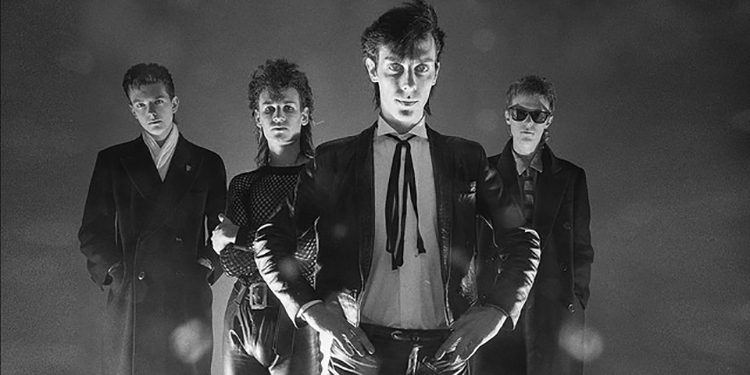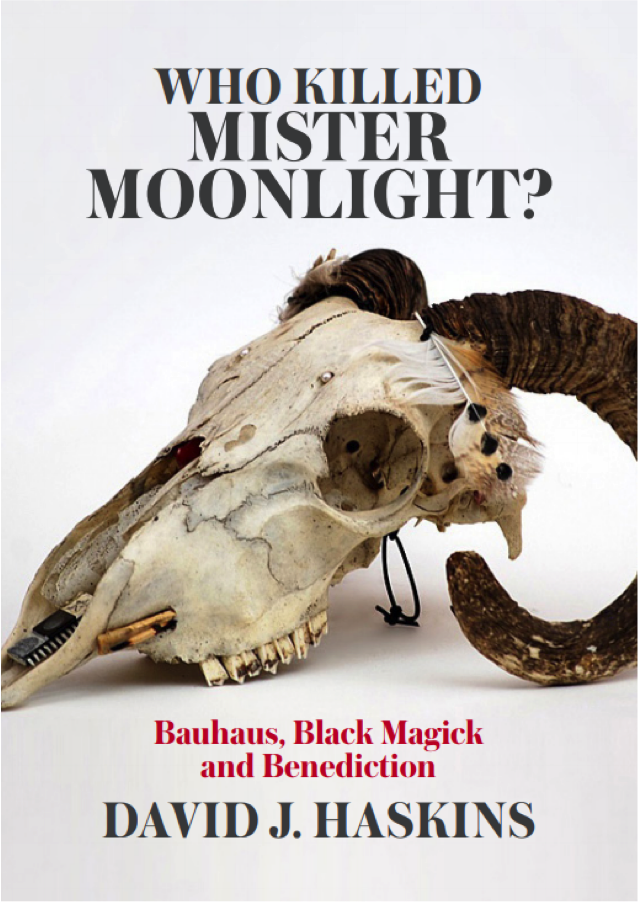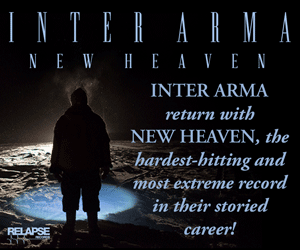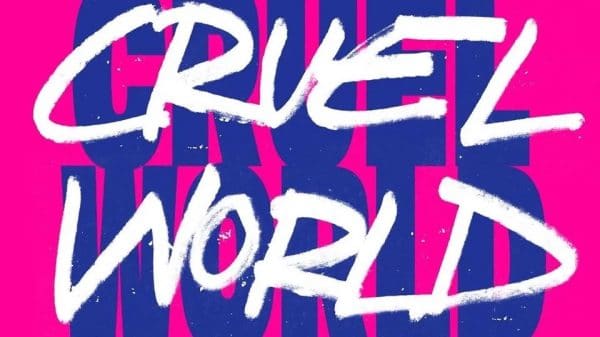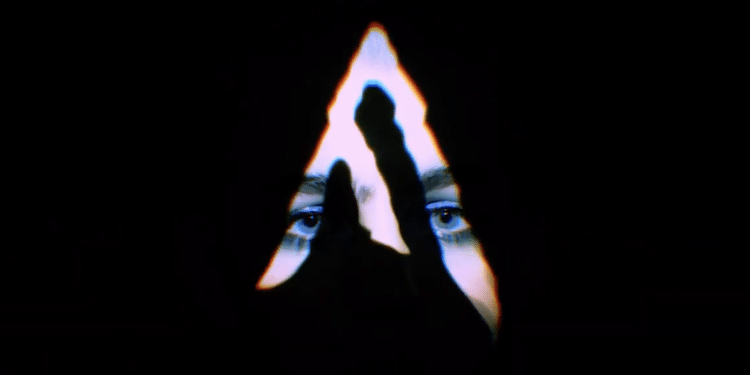David J Haskins – The Resurrection Hex – Bauhaus, Black Majick and Benediction
It all starts with a Bossa Nova beat. Then three descending bass notes usher in swirling and strafing guitars that skitter like spiders, white on white translucent. And lo, a cult is born. Undead.
The man behind those iconic bass notes was none other than David J Haskins, and along with his brother Kevin and the mercurial duo of Daniel Ash and Peter Murphy he would go on to create some of the most unique, oblique and enduring music of the 20th century. Bauhaus, Love and Rockets, the Jazz Butcher. From the pubs and clubs of London town to the dizzying expanse of Dodgers stadium and all fixtures in between, David’s bass has remained a constant anchor. Angular, funky, sloping, seductive. He teases myriad shapes out of his strings and gives form to the frisson.
And now he’s told his tale. Who Killer Mister Moonlight? – Bauhaus, Black Majick and Benediction gives the first hand scoop on not only Bauhaus’ gestation, disintegration and reformation (repeat) but also David’s dabbling with the dark arts, divine invasions and all things spooked and symbolic. About to be re-pressed for a second edition, David took time out of his current touring schedule to guide us through the many corridors of a life extraordinarily lived.
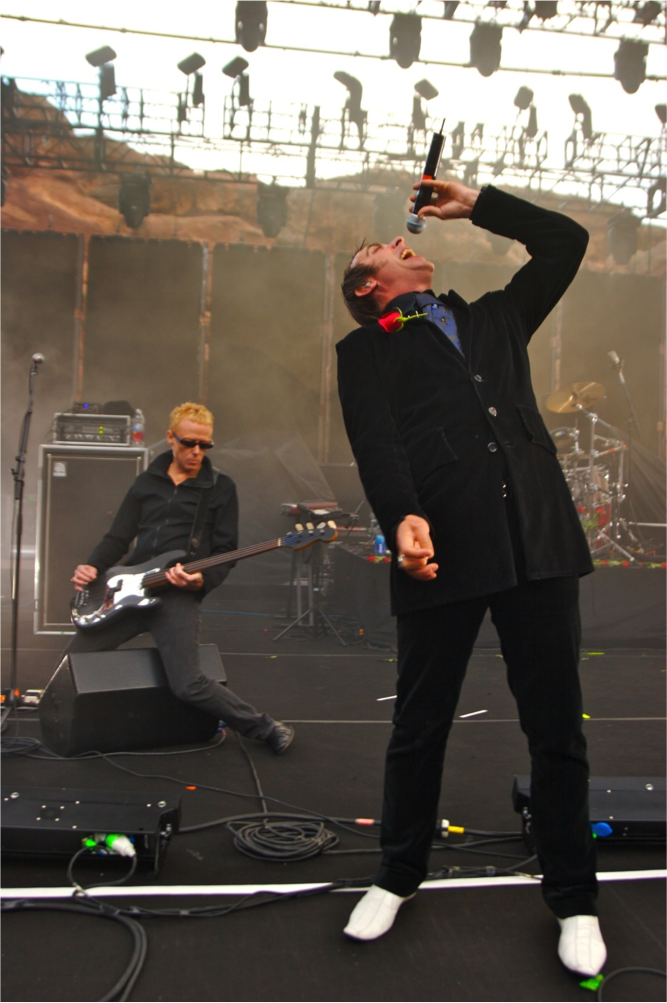
Congratulations on the book – it covers such a large span of time and such a litany of achievements, highs, lows and adventures. As you were writing it did you find that certain times, incidents or feelings were difficult to recall whereas others leapt out at you with a certain clarity?
Thank you. I have always kept journals and a diary and have these going back to 1980. These entries served as mnemonic stepping stones when piecing together the puzzle of the memoir. I was surprised how clearly I was able to recall little details once my memory was jogged by what was sometimes just a single line in my day book.
There is a lot of detail in the book about the recording of each of the Bauhaus records, but The Love and Rockets and solo recorded output was mostly glossed over – was this a conscious narrative choice, or does it point to a possible sequel detailing those more lysergic years of music?
It was completely conscious, as the book is my take on the story of Bauhaus, and I only mentioned Love and Rockets when it was germane to the latter. I am currently working on notes for a new book which will include a lot of anecdotal material concerning Love and Rockets, although it will not be the complete chronological tale of that band. It will shoot off at tangents. It’s a wild psychedelic Chinese puzzle that is gestating in the depths of me noggin!
You discuss your experiments with magick at some length in the book and I was wondering where your interest in this was first piqued. What first signposted your jaunt down the left hand path so-to-speak?
As a kid, I was fascinated with the occult and being raised in a fairly non-religious home it was something which was not repressed by my parents, although my dad would often describe me as “most peculiar”! I was interested to learn that my great aunt on my mother’s side was a spiritualist. From an early age I loved to read the works of Edgar Allan Poe and a little later, H. P. Lovecraft and Arthur Machen. In my early twenties I got into Aleister Crowley, Bryon Gysin and William S. Burroughs which led to further investigations and then I met with Genesis P-Orridge and the genie was out of the bottle so to speak! Although, I believe that Gen’s direction was far more ‘left hand path’ than my own which was and is more Pantheistic and leaning towards high magick (white). When Alan Moore invited me into his cabal of magicians, my interest and practice deepened considerably. At one point, it started to take me over and I think I became a bit unhinged to tell you the truth. It’s the nature of the beast! These other dimensional forces that are at play are very wild and powerful and one can be completely consumed if one is not careful. I knew that I needed some spiritual grounding and was blessed to have found this through my discovery of Paramahnasa Yogananda, my true guru, although I still maintain a profound relationship with the goddess of the underworld and find nothing contradictory in that.

With your later interest in spirituality, it’s like you were looking for a plate piled with every pantheon and that the medium was a secondary consideration. What you were truly seeking was a sense of meaning, mysticism and connection right? A conduit to the divine?
Exactly that – and I do believe that music can certainly operate as such.
It seems to me that, especially with the use of psychedelics we experience great instances of synchronicity, pareidolia, synesthesia and the associated intensity of all things symbolic. What’s interesting to me in encounters like this is meaning we interpret from these symbolic resonances as well as the meaning we project onto them. I feel we view and interpret them through the prism of our belief system or reality tunnel. It seems that you and Alan were operating through the lens of a classic set of archetypes based upon mythology and magick but that these same experiences could be interpreted in a wildly varied fashion based upon the veil we drape over them in both our projections and interpretations. Where you saw evidence of Hecate at play, some may have posited these happenings to anything from Aliens to Pixies to fragments and imprints that had crystalized in their subconscious for any number of reasons. Would you say that is fair and would you care to elaborate?
Well, yes, I do agree with you about projection, but you cite the example of Hecate and when I had my initial encounter with that particular entity, I was unaware of the known symbolic associations and yet they were all there, present and correct in my devastating dream that was somehow more than just a dream. As I describe in the book, it was Alan who immediately identified these and ‘Her’. I found that when I was immersed in the magickal realm and conducting rituals and experiments with Alan, the phenomena which you describe, especially synchronicity and magickal manifestation was intensified tremendously. It was somewhat overwhelming and I had to consciously pull back. Eventually I relinquished my magickal tools. This was done with great respect and reverence. I buried my exquisite athame (magickal dagger) in the desert. It was extremely strange, as when I returned home from the burial, I tried to bring up a photograph of the athame on my computer and it had mysteriously disappeared from my photo library!
I guess with the intensity of the music, the intensity of the personalities and the reading material you were exploring, the symbols would be pretty intense too right?
Not to mention the drugs! Yes!
Clearly in a certain sense perception is reality in the sense that each man/woman is the centre of his/her own universe processing their experience into their own narrative. As the chief protagonist in this odd psychodrama did you ever realize that you were in fact perhaps authoring these experiences?
As I mentioned previously, manifestation certainly came into play. Oh no! It’s the Pillsberry Doughboy!
In the book you make reference to Robert Anton Wilson’s concept of ‘Chapel Perilous’; as a long-time fan of his works, I was wondering what your favourite RAW book is? I myself am partial to ‘Prometheus Rising’ and ‘Quantum Psychology’. I really grokked the concept of ‘model agnosticism‘ when it came to unravelling the act of perception. Did you find yourself utilizing this ontological model when processing some of the weird shit that went down as you experimented with consciousness?
Ah! RAW was one of the greatest thinkers of our age. Brilliant, brilliant man. I first read the ‘Illuminatus!’ books which my friend and sometime saxophonist, Alex Green turned me onto but it was ‘Cosmic Trigger’ that really ignited my imagination. ‘Prometheus Rising’ made a big impact on me as well. I love how truly open minded (“model-agnostic” indeed) he was and how the most profound insights were often couched in wonderfully wicked humour. Boy, do we need him now but there are always the books and the recordings. I still have a collection of these cassette tapes that he would send out where he would hold forth on all manner of interesting subjects, his profundity and scintillating dry wit very much in evidence. Yes, RAW certainly provided an invaluable guide for processing all that weird shit as it was flying at me at great speed having just hit the fan of magickal meddling.
As a teenager I was obsessed with Bauhaus. The mystery surrounding the band was intoxicating, perhaps due in part to your excellent use of oblique imagery and yet I know most of the songs better than I know my own mothers face. They signposted my life and informed my attitudes to everything from art to sex. In a way, this use of imagery birthed a multigenerational cult and the music seems evergreen (or possibly ever-black). Do you think you were tapping into and siphoning from something universal?
In retrospect, I would say yes. It was universal as so many outsiders were able to identify with what we were putting out there. They no longer felt alienated, but rather connected directly with us and all the other fellow weirdos who were in on it so to speak! The oblique imagery was very conscious as mystery can be so potent. It is something that is sorely lacking in these days of rampant internet over exposure. When you look at the individual photographs of each band member on the inner sleeve of our first album, In The Flatfield, the images are very oblique and considering how goddamn pretty we were (!), there is a potency to that and it was something of which we were very aware. We did all the art work ourselves (mainly Daniel and myself), and it was an aspect that we considered to be just as important as the music, as was the lighting for our live presentation. A true ‘gesamkuntswerk’ if you will.
Curious to unravel this enigma I nearly jumped out of my pants when at around the age of 17 I discovered a book by Ian Shirley called ‘Dark Entries: Bauhaus and Beyond’ in a local specialist bookstore. It wasn’t cheap and I was as skint as only a busker can be but I returned weeks later with heavier pockets where I was relieved to see it still sitting there as if waiting for me. Are you familiar with this rendition of the story, and what did you think about his telling of the tale?
Yes, I read it a long time ago. My recollection is that it was a bit superficial. Very much an outsider’s take. With my book it’s like: now for the inside dope!
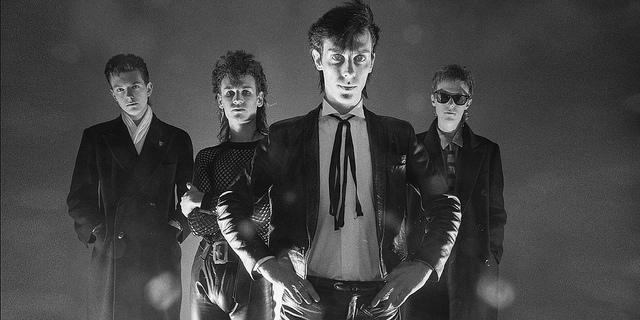
I loved the scene in the book where you recall the ecstatic rush that accompanied the first playback of ‘Mask’ as it spirals into its crescendo. It’s a feeling I still get when I listen to it, let alone the first time it spilled into my ears where it just about knocked me flat and made me levitate at the same time. What are some of the other most ecstatic moments you can recall throughout the Bauhaus years either in the studio or onstage?
Well, certainly the recording of ‘Bela Lugosi’s Dead’. It was the first track that we recorded as part of five song session all completed in eight hours including the finished mixes. It was the very first time that Peter had sung into a studio mic and we nailed it first take. We knew that we had something very special in the can. Another event that comes readily to mind was the Halloween show that we played at The Fillmore in San Francisco in 2005 when we opened with an extended improvised version of ‘Bela’ which featured three female string players, violin, viola and cello. They appeared on their own at first and vamped (no pun intended!) on the theme. We then joined them one by one, Kevin, then myself, then Daniel and finally, Peter. It was such an atmospheric, dramatic build. Epic!
Your book ends abruptly on a kind of sad and sudden note, which I guess is fitting given the circumstances of the dissolution of the band, the alchemy of four individuals always being somewhat fraught with splinters emerging out of everything from their personalities to their choice of pants. It appears that Peter has a classic personality disorder whereby he vacillates between extreme narcissism and extreme introspection and self- doubt. Classic lead singer syndrome. As what could possibly be construed as the backbone and ballast of the band, keeping it on an even keel must have been exhausting at times. What was your overriding emotion as those final refrains of ‘oh to be the cream’ rang out in the Portuguese air?
It was overwhelmingly emotional and poignant as we felt without a shadow of a doubt that this would be the very last time that we played these songs and the last time that we would ever be together as a band.
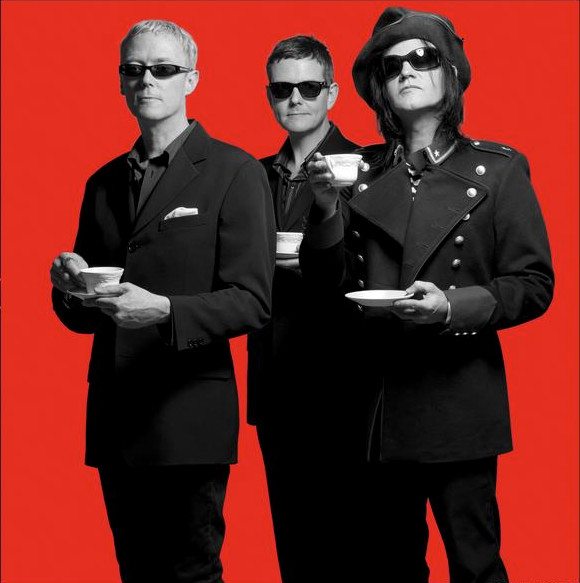
Love and Rockets was obviously a very different dynamic and that lightening of mood is clearly reflected in a lot of the music. Even the introspective and weary songs like ‘The Dog End of a Day Gone By’ and the acoustic rendition of ‘All in my Mind’ are swirling and psychedelic as if exhaustion is about to break through into a kind of delirious hope…
Yes, the whole experience was so different from Bauhaus. Very buoyant. It was as if a great heavy funeral pall had been lifted and we had been set free to explore another world. Like artists or little kids in art class at school suddenly given a whole new palette of colours when previously all that they had to work with was black, white and grey and maybe a drop of red!
Though nominally a three piece I always thought of Love & Rockets as a four piece with the studio acting as the fourth member. There are so many layers and effects being applied that it gives the music a totally different texture and tonal quality.
Yes, it is very rich sonically and by the time we set out to make our debut recording, ‘Seventh Dream of Teenage Heaven’ we had learnt a lot from making those four Bauhaus albums. There was indeed a fourth member of the band or a fifth if we count the studio! John Rivers who was the engineer and co-producer on the first two albums brought so much to the sound of Love and Rockets. He also played a lot of the keyboard parts and did the synth string arrangements which reached its zenith on the instrumental, ‘Saudade’. The Flaming Lips said that they were extremely inspired by that track in particular and that their whole approach to strings on their recordings came from it. Following in the footsteps of John came our original engineer from back in the ‘Bela Lugosi’s Dead’ days, (as well as Bauhaus’ ‘Burning From The Inside’ album) Derek Tompkins and he was very much involved in the evolution that can be heard on Love and Rockets’ third album, ‘Earth, Sun, Moon’. We actually decided not to continue with John as he detested the first Violent Femmes album which we, as a band loved. Music can be divisive that way!
Do forgive me but I have to ask this, in your recollections of a particular ceremony you describe imbibing from an impromptu golden fountain, I did wonder if you ever also partook of Crowley’s curious ‘Cakes of Light’?
No and were they to appear on the menu I think I would pass and go for the crème brulee!
Finally, as someone with such a huge and varied catalogue of work under your belt, which gems shine and best refract the light of David J Haskins in retrospect? Which best fill your heart, fires your mind in recollection, and if an alien was to land tomorrow and seek to untangle it all, what would you play for them?
For the alien listener, I would probably play the first and the last. The alpha and the omega as it were. Namely, ‘Bela Lugosi’s Dead’ which remains as my favorite Bauhaus record and then my latest double album, ‘Vagabond Songs’ which contains quite a broad array of styles and is really quite reflective of every solo album I have made thus far. As far as those other shining gems go, I’ll respond by not trying too hard to think about it, so here goes off the top of my head and bubbling fast to the surface of consciousness: ‘I Hear Only Silence Now’ from my solo debut, ‘Etiquette of Violence’. My friend, Emily Jane White recently recorded a beautiful cover of this as part of the ‘Kanreki’ double CD set that my dear pal and esteemed manager, Darwin Meiners assembled in secret as a gift for my 60th birthday. (I’ve been giving these away to friends) I will be recording a new version of this song as a duet with Emily. What else? ‘Ritual Radio’ is the very definition of a ‘deep cut’ as it is very obscure but deep cuts often draw the most blood. As you may recall I describe the creation of this epic in the book. We were definitely channeling some strong forces on that one. Talking of which, there is this track on my album, ‘Not Long For This World’ entitled, ‘Eulogy For Jeff Buckley’ where again, I felt like the conduit for some kind of divine energy / inspiration. Also the rendering of the title track of that album (which is all to do with mortality) came as a beautiful spontaneous gift. When we arrived at the studio, Michael Berg sat at the baby grand and started to play the most haunting melancholic melody. When I asked him what it was he said that it had just come to him. I immediately went into the vocal booth told the engineer to roll tape and Michael to play and the recording you hear is our first run through. It was shivery! And I think I’ll end there . . . with a shiver!
Thanks for the Shivers.
‘Who Killed Mister Moonlight’ is available now.

